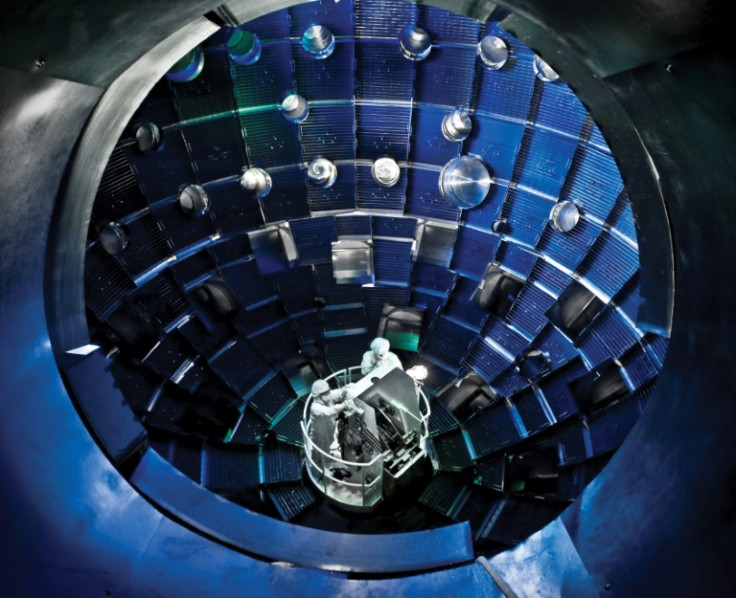Goodbye Fossil Fuels – Hello Fusion Energy

On Sept. 17, hundreds of thousands marched in New York City and elsewhere demanding an end to fossil fuel use. Society desperately needs to become more sustainable to recover from a summer of wildfires, an estimated 7 million fossil-fuel-pollution-related deaths and 5 trillion dollars spent on these fuels. However, the fastest route to ending fossil fuels is not what most people think. It's not solar and wind. It's fusion energy, the energy that powers our sun and all the other stars in the universe. Fusion can replace fossil fuels faster and cheaper than renewables, but private companies need more access to government funding to make this a reality.
The media does not give the impression that fusion is the solution to our finite energy sources. Why? Solar and wind are reported to be affordable and cheaper than fossil fuels. The capital investment is widely quoted at about $1 per watt of power capacity. Surprisingly, this $1 refers to dollars per watt of peak power, the maximum a solar or wind farm is capable of producing at the sunniest or windiest minute.
The real story is much less sunny. Since solar and wind cannot provide 24-hour year-round power without enormous amounts of energy storage for the night and for cloudy, windless days, nor without a "smart" long-distance grid that can shift power from where it's produced to where it's needed, the real costs of year-round solar and wind are about $10 per watt. That is far higher than the capital costs of fossil fuel generators.
With adequate funding, most fusion companies expect to distribute power in the next 12 years, not 30, and some plan to plug into the network in this decade.
However adequate funding is not available right now. Too little money leads to too small staff and much slower progress than is technically possible. Almost all fusion companies now rely overwhelmingly on private investment, including crowdfunding platforms for small investors. But we need government funding as well to succeed rapidly.
But how fast can we get to commercialized fusion energy? We can do it in a decade or so. That's true even though for years the fusion stories in the news have been about the giant, multibillion-dollar government-funded projects like the ill-fated, never-finished International Tokamak Experimental Reactor (ITER) in France and the National Ignition Facility, or NIF, in the U.S. Their huge costs and much-postponed schedules have resulted in the jaded "fusion is always 30 years away" dismissal.
What news stories have missed are the small investor-funded fusion companies that are making the fastest progress toward practical fusion energy. While it's true we don't yet have Doc Brown's fusion-powered flying DeLorean car from "Back to the Future" movie, right now, the small fusion company that has gotten closest to getting more energy out of the device than is put into it is LPPFusion, in the U.S. They have spent millions, not billions, of dollars to achieve this progress. They are using devices that are far smaller and cheaper than NIF or ITER. LPPFusion's FF-2B device weighs 3 tons, far smaller than ITER's 400,000 tons.
They've achieved major accomplishments and will reach more as small startups plan to use hydrogen-boron fuel (known as pB11) that is offering unique value for our society.
This special fuel creates three new possibilities not usually available with fusion: Zero radioactive waste, small and cheap generators, and fuel that can be converted into electricity – resulting in decentralized power distribution.
Replacing all current fossil fuel energy with solar and wind power by 2050 will cost at least $20 trillion per year — nearly four times what is currently spent on fossil fuels. And this doesn't count the need to maintain solar and wind farms and replace them about every 20 years. No wonder BP and other oil companies are not investing in it to the extent that they promised.
Our society must immediately transition to cleaner energy to avoid environmental consequences that will kill our planet and our ability to live on it. Fusion gives us a way to bypass the expensive, high-maintenance 'solution' of renewables and create better societies with fewer limitations. Government funds are the only thing that's required to unlock the power of fusion.
Fusion requires less space, and materials, and has the highest energy density known to science, making it a cheap and fast way to stop using fossil fuels for good. The investment needed is dramatically lower than what it takes to implement renewables on a large scale, so why aren't we seeing any change? Well, fusion energy has been branded as a black hole for financial investment because of the ineffective projects taken on by the government.
Some of the best teams and equipment have been put toward commercializing fusion, but we won't develop robust power generators until startups receive the investment they need. Almost all fusion companies now rely overwhelmingly on private investment, including crowdfunding platforms for small investors, like Wefunder, Start Engine and SeedInvest. Their innovations allow them to find novel ways of utilizing funding without the red tape public sector projects have. These differences could allow startups to create a fusion-based economy that lifts the standard of living for all while preserving the precious environment. Say good-bye to fossil fuels and hello to fusion.
© Copyright IBTimes 2025. All rights reserved.





















